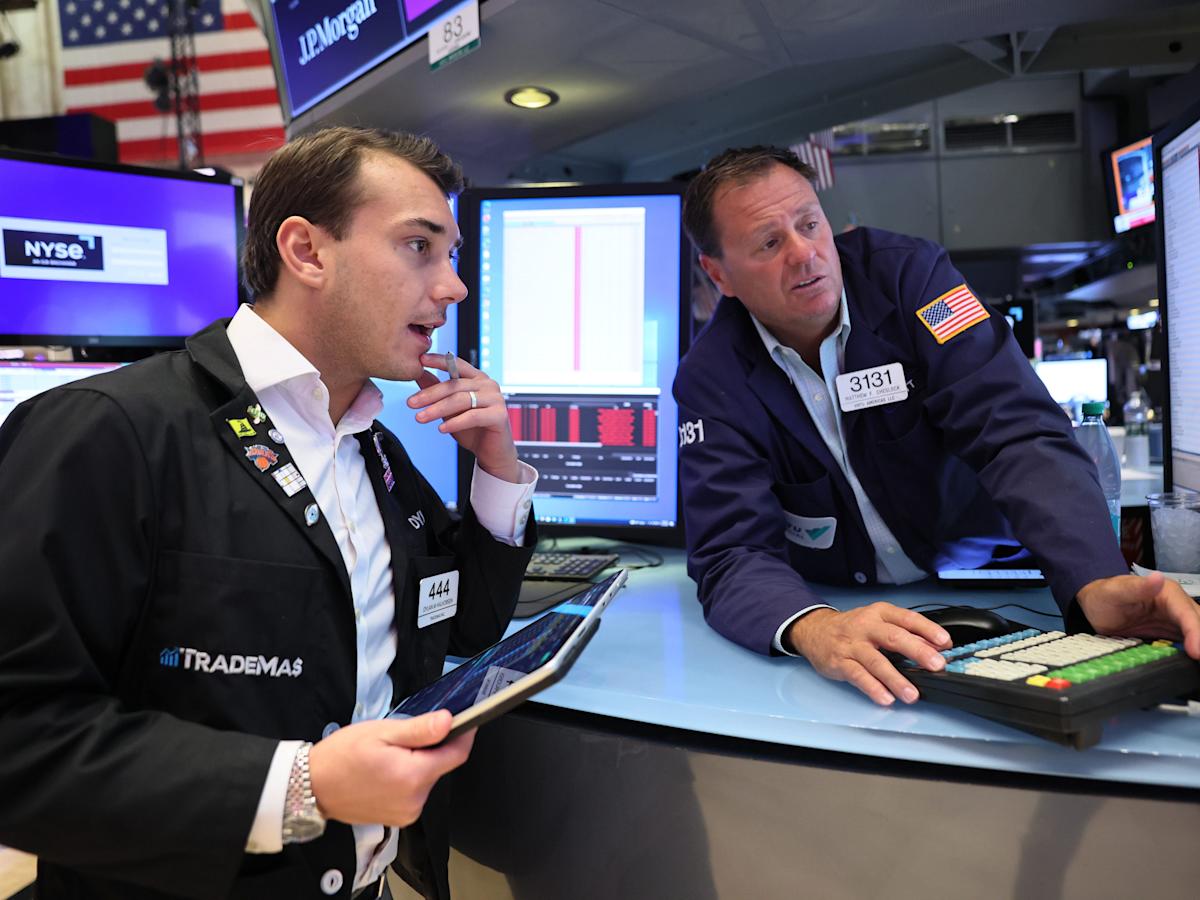The Shiller P/E ratio, a trusted stock-market gauge, just hit its highest level since the dot-com bubble
-
The Shiller P/E ratio passed a mark on Monday it last hit during the dot-com bubble.
-
The stock-market indicator peaked before the S&P 500 crashed 49% in the early 2000s.
-
AJ Bell’s Russ Mould said stocks are pricey, but “you don’t know when trouble is going to strike!”
A trusted market gauge has surged to its highest levels since the dot-com bubble, signaling stocks are the most expensive in 25 years.
The Shiller P/E ratio, also known as the cyclically adjusted price-to-earnings (CAPE) ratio, compares the current value of a stock index like the S&P 500 to its average, inflation-adjusted earnings over the last 10 years.
The S&P’s Shiller P/E ratio crossed 40 on Monday for the first time since 2000, when it reached a record 44. That spike preceded a 49% crash for the benchmark stock index between March 2000 and October 2002 as the internet boom collapsed.
“The US equity market looks expensive relative to its history, pretty much any way you slice it,” Russ Mould, AJ Bell’s investment director, told Business Insider by email.
He added that the Shiller P/E and several other valuation measures are “all in the top 10% of their historic ranges.”
Mould said that “valuation does not guarantee an imminent accident,” but investors might want to take precautions, in part because US stock returns have been “modest to disappointing” when they’ve traded at “similar Shiller P/E multiples to those in evidence now.”
He added, “The tricky bit is 10 years is a long time and you don’t know when trouble is going to strike!”
The Shiller P/E ratio was developed by Nobel Prize-winning economist Robert Shiller, who predicted the dot-com bubble would burst in “Irrational Exuberance,” published just as the market peaked in March 2000.
He correctly warned the housing boom could collapse in the book’s second edition, published in 2005.
Investors use the traditional P/E ratio to value a company’s stock based on its earnings multiple, or how many times higher its price is than its earnings per share, or EPS, in a year. They calculate it by dividing a stock price by an annual EPS figure, either historical or projected.
Similarly, the Shiller P/E ratio takes a stock index’s point value and divides it by the combined EPS of its constituent companies over the last 10 years, adjusted for inflation and divided by 10 to get a real, average figure.
So if the S&P 500 is at 6,700 points, and its average, inflation-adjusted EPS over the last 10 years is $167, dividing one by the other yields a multiple of 40.



Leave a Comment
Your email address will not be published. Required fields are marked *